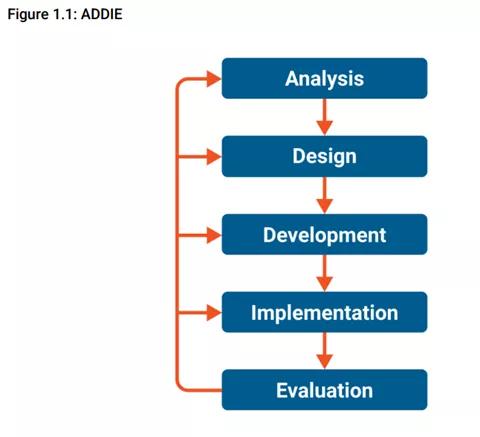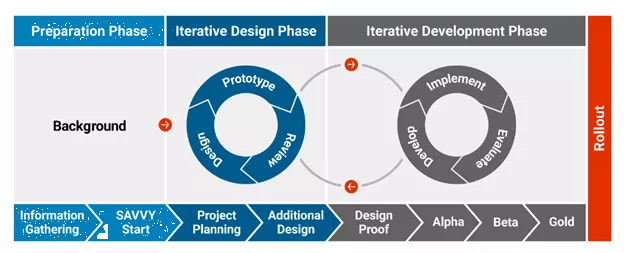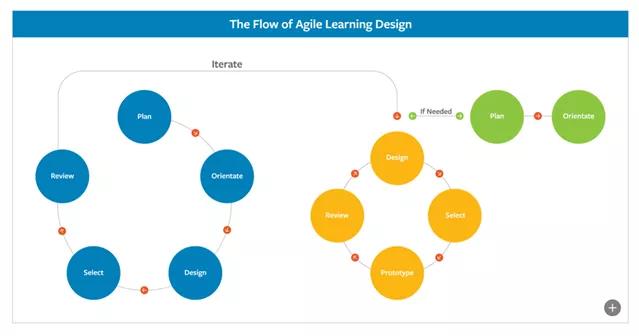What is Instructional Design?
Instructional design, also known as instructional systems design or instructional systems development (ISD), is the practice of creating learning experiences to support long term learning. It's a systems approach to analyzing, designing, developing, implementing, and evaluating any instructional experience.
ISD is based on the belief that training is most effective when it gives learners a clear statement of what knowledge they will gain through training and how their performance will be evaluated. This definition and more information on ISD is in the Talent Development Body of Knowledge.
In the context of the workplace, instructional design provides a practical and systematic process for delivering effective training to its target audience. It's one of the 23 capabilities in the Talent Development Capability Model™.
What Is an Instructional Designer?
An instructional designer applies learning theory to design course content, learning activities, and other training solutions to support the acquisition of new knowledge or real world skills. Instructional designers develop all instructional materials of a training program, including presentation materials, participant guides, handouts, and job aids or other resources. They are also responsible for evaluating training, assessing what was learned, and if the learning solution led to measurable behavior changes.
Prior to the course design and development, an instructional designer conducts a needs assessment. This determines the stakeholder goals, if the training is necessary, and the needs of the learning event. A needs assessment will determine:
Organizational goals and needs
Knowledge, skills, and attitudes required for tasks and competencies
What the learner should know and be able to do because of training
Learner needs and characteristics
One way to determine learner needs and course objectives is by using Bloom’s Taxonomy. Bloom’s Taxonomy is a system used to define and distinguish different levels of learning. The three domains include cognitive (mental), affective (emotional) and psychomotor (physical).
Once an instructional designer analyzes the needs assessment and understands the training objectives, the course creation process can begin. The instructional design process requires selecting the most appropriate strategies, methodologies, learning activities, and technologies to maximize the learning experience and knowledge transfer.
Adult Learning Theories in Learning Design
Instructional designers can use adult learning theories to identify learner characteristics and appropriate instructional design methods to create effective and appropriate learning solutions.
Common adult learning theories include:
Knowles’ Theory of Andragogy: Malcolm Knowles is credited with developing this theory in the 1970s. Andragogy differs from pedagogy in that adult learners bring their experiences with them to guide their learning journeys. Adults have more choice and control over their learning environment. Andragogy is the cornerstone of all adult learning theories.
Gagne’s Nine Events of Instruction: Is a widely known and systematic approach to creating effective learning design. When completed in order, the nine events lead to better engagement and improved retention.
Maslow’s Hierarchy of Needs: Maslow categorizes human needs into five categories: physiological, belonging, esteem, and self-actualization. According to this theory, optimal learning requires that psychological and safety needs are met.
Meier’s Accelerated Learning:
This theory includes seven guiding principles that enhance the design and learning processes. Understanding cognitive science and how the brain works can assist designers in selecting the correct strategies to augment learning.
Common instructional design models include:
This model Is one of the most well-recognized instructional design models. Founded in the 1970s at Florida State University, ADDIE represents the five phases of this model: analysis, design, development, implementation, and evaluation. The steps are foundational for almost any learning design activity.
A primary advantage of ADDIE is it consistently produces training that results in learners acquiring the shared knowledge and skills needed for effective job performance. ADDIE’s primary disadvantage is that it is highly systematic. This can cause talent development professionals to overlook other considerations that fall outside of the ADDIE framework.

SAM (Successive Approximation Model): This model encourages the evolution of requirements and learning solutions through stakeholder collaboration. By using repeated steps, or iterations, to continuously improve the learning product, SAM allows designers to work within real project constraints, including limited time and cost. On the other hand, the collaborative nature of SAM requires input from many individuals, which can lead to delays.

Seels and Glasgow Model: This model uses the context of project management as the basis for design. Like SAM, this model is iterative and relies on feedback and interactions that occur during the process.
Agile or rapid prototyping: With its roots in software development, Agile uses cross-functional teams to support collaborative efforts. Agile uses an iterative and incremental design approach to encourage the evolution of requirements and learning solutions through stakeholder collaboration. As a result, Agile is often used to maximize customer value.

How ATD Can Help You With Instructional Design?
Since our founding in 1943, ATD’s focus has been to help talent development professionals succeed in their roles. With instructional design, ATD curates the best content from the world’s leading experts in the field, providing opportunities for designers to learn the latest techniques using the latest technologies.
We look at talent development holistically, we understand how instructional design fits with evaluation, training and other aspects of workplace learning. We are a leading industry organization, defining standards for the field of instructional design and talent development as a whole.
For access to even more resources, including practical tools and templates, research, and insights, you’re invited to become an ATD member. Learn more!

BLOGS
Instructional Design Topic Page
Explore instructional design articles for all levels. Find strategies, insights, and best practices to elevate your expertise. Start here!

NEWSLETTER
Instructional Design Newsletter
Sign up for curated content for professionals who design learning experiences and materials. Sign up today!

COURSES BY ROLE
Instructional Designers
Discover courses tailored to support instructional designers creating online learning events, conducting needs assessments, evaluations, and more. Explore courses!

EVENTS
ATD Events
Talent development professionals come together to give you conference experiences that are diverse in education, solutions, and opportunities. Learn more!

GLOSSARY TERM
Talent Development Glossary Terms
Learn about essential terms and need-to-know expressions for training and development professionals. Explore now!
Free Instructional Design Starter Guide
Instructional designers are responsible for creating the course design and developing all instructional material.
